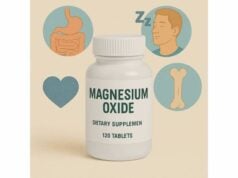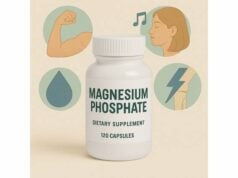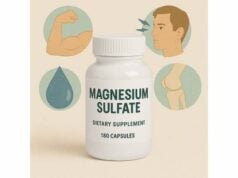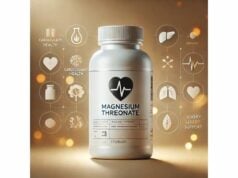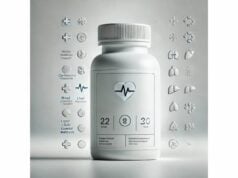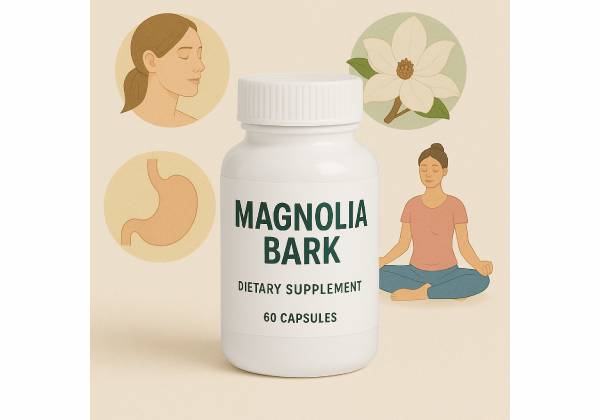
Magnolia bark—traditionally used in East Asian medicine—has moved into modern wellness for sleep support, calmer moods, and stress resilience. The bark of Magnolia officinalis (and related species) contains two well-studied phenolic compounds, magnolol and honokiol. These molecules act on neurochemical pathways involved in arousal and stress, which helps explain why magnolia is often found in nighttime and “stress-balance” formulas. Beyond the nervous system, magnolia’s constituents have antioxidant and anti-inflammatory actions that are being explored for metabolic and cardiovascular health.
This guide translates the research into clear, practical advice: what magnolia bark does, how it works, how to use it safely, and where the evidence is strongest—and still emerging. You will also find grounded dosage ranges based on clinical trials (largely using combination products) and traditional practice (crude bark preparations). If you’re considering magnolia for sleep, anxious tension, or menopausal sleep complaints, this article helps you decide whether it fits your goals and how to use it responsibly.
Essential Insights
- May reduce perceived stress and improve mood in 4–6 weeks; sleep quality benefits are most reported when taken in the evening.
- Start low to avoid daytime drowsiness; magnolia can potentiate sedation.
- Typical amounts: 500–750 mg/day of a Magnolia–Phellodendron blend in trials; traditional decoctions use 3–11.5 g/day crude bark; many single-ingredient capsules provide ~100–300 mg/serving.
- Avoid if pregnant or breastfeeding; use caution with anticoagulants, sedatives, or methotrexate unless your clinician approves.
Table of Contents
- What is magnolia bark and how it works
- Proven and promising benefits
- How to use magnolia bark
- How much magnolia bark per day
- Side effects, interactions, and who should avoid
- What the evidence says
What is magnolia bark and how it works
Magnolia bark comes most often from Magnolia officinalis, a tree native to China long used in traditional formulas to calm restlessness, ease abdominal discomfort, and address “phlegm-dampness” patterns. Modern analyses highlight two major bioactives—magnolol and honokiol—present in significant amounts in standardized extracts. These biphenolic compounds cross the blood–brain barrier and interact with inhibitory neurotransmission, which is central to their calming profile.
A primary mechanism is positive allosteric modulation of GABAA receptors. In plain language, magnolia’s phenolics make GABA (the brain’s “brake pedal”) more effective at the receptor without acting like a full-on sedative themselves. This explains why many users describe “quieter,” less ruminative evenings rather than heavy sedation. Magnolia constituents also influence other neurochemical targets under study—such as dampening excitatory signaling and reducing neuroinflammatory pathways that can amplify stress responses.
Outside the brain, magnolia demonstrates antioxidant and anti-inflammatory effects in cellular and animal models. These actions are relevant to endothelial function, metabolic health, and pain signaling. Magnolol also shows antiplatelet activity in experimental systems, which becomes important for safety and drug-interaction considerations.
It’s worth separating traditional preparations from modern supplements. Traditional use employs crude bark decoctions (grams of herb simmered in water). Most Western supplements use concentrated extracts (capsules or tinctures), often standardized to a defined honokiol/magnolol content. Some commercial products combine magnolia with Phellodendron amurense (a source of berberine alkaloids); several human trials used this combination rather than magnolia alone. When reading evidence or choosing a product, note whether the study used single-herb magnolia or a blend—this distinction matters for both dosing and expectations.
Finally, magnolia is not a cure-all. Its benefits are most consistent for stress-related symptoms and sleep quality support. Effects on body weight, cardiometabolic risk, or chronic pain remain exploratory. Realistic expectations, careful dosing, and attention to timing (often evening) improve the odds of a good experience.
Proven and promising benefits
Stress and mood in everyday life. In randomized, placebo-controlled trials enrolling moderately stressed adults, daily supplementation with a magnolia-plus-phellodendron extract over 4–6 weeks led to lower perceived stress scores and improvements in several mood subscales (e.g., vigor up, fatigue and confusion down). In one trial, investigators also observed a reduction in daily cortisol exposure—consistent with a modulated stress response rather than simple sedation. These outcomes align with magnolia’s GABAergic effects and help explain its popularity in “calm focus” formulas used during demanding periods.
Sleep quality and nighttime calm. Clinically, magnolia helps many people who can fall asleep but can’t stay asleep, or whose minds race at bedtime. Benefits are most reported when it’s taken in the evening; some users pair a modest daytime dose with a slightly higher bedtime dose to avoid daytime drowsiness. In menopause-related studies, formulas that add magnolia bark to soy isoflavones and lactobacilli improved subjective sleep and psycho-affective symptoms. While combinations make “credit assignment” tricky, they suggest magnolia’s utility when sleep disruption is linked to stress or menopausal transition.
Menopause symptom clusters. Randomized studies in symptomatic menopausal women found that adding magnolia bark extract to isoflavones (and, in some protocols, probiotics, vitamin D, and calcium) yielded additional improvements in insomnia, irritability, and overall climacteric scores versus isoflavones alone. These were combination products, but the incremental gains are clinically relevant: they point to magnolia as a reasonable adjunct for sleep and mood within the broader menopause toolkit.
Tension-related eating and body composition. An earlier pilot trial in stress-eating, overweight premenopausal women reported modest benefits on weight maintenance while on a magnolia-berberine blend, likely mediated by better stress control rather than direct metabolic effects. Results were preliminary and not consistently replicated, so magnolia should not be viewed as a weight-loss supplement; instead, think of it as a stress-behavior support that may indirectly help some people.
Emerging areas. Preclinical studies continue to explore honokiol and magnolol for neuropathic pain modulation, neuroinflammation, and cardiometabolic endpoints. These data are hypothesis-generating: interesting, mechanistically plausible, and useful for designing better human trials, but not proof of benefit in everyday use yet.
Who tends to benefit most?
- People whose stress shows up as mental overactivity at night.
- Those with situational anxiety or irritability during demanding periods.
- Menopausal women with sleep and mood complaints who prefer a non-pharmacologic adjunct.
Who is less likely to benefit?
- Individuals seeking potent daytime stimulation or focus (magnolia is calming, not energizing).
- Those expecting metabolic or weight-loss effects without diet, sleep, and movement changes.
How to use magnolia bark
Choose your format. Most users opt for capsules containing standardized magnolia bark extract. Labels commonly indicate the percentage of honokiol and magnolol, though ranges vary widely. Liquid tinctures are an alternative if you prefer flexible micro-dosing. Traditional decoctions use grams of crude bark simmered in water; these are typically prepared by trained practitioners within multi-herb formulas.
Time it right. Because magnolia can enhance relaxation, many people take it in the evening—either 30–60 minutes before bed or as part of a wind-down routine. If your main goal is daytime stress balance, start with a small morning dose and evaluate for drowsiness; some find a split schedule (small AM dose, standard PM dose) gives calm without slowing them down.
Start low, then titrate. Sensitivity to calming agents varies. Begin at the low end of the label’s range or even half a capsule to assess your response. Increase every 3–4 nights as needed until you reach your “sweet spot”—the point where your mind feels settled without grogginess the next morning.
Use duration and reassessment. Give magnolia 2–4 weeks to judge its effect on stress and sleep quality; most clinical trials ran for 4–6 weeks. If you’re not noticing benefits by week two, review timing (shift doses later), sleep hygiene, caffeine intake after midday, and screen exposure at night. If benefits are clear, consider a periodic break (e.g., 1 week off every 6–8 weeks) to reassess ongoing need.
Stacking thoughtfully. Magnolia often appears with L-theanine, glycine, magnesium glycinate, or lemon balm in nighttime blends. If combining, change one variable at a time so you know what’s helping. Avoid pairing magnolia with other strong sedatives unless guided by a clinician.
Quality pointers.
- Look for brands that specify botanical source (Magnolia officinalis), standardization (e.g., honokiol/magnolol %), and third-party testing (identity, potency, contaminants).
- For tinctures, check the ratio (e.g., 1:3 herb:menstruum) and the solvent used.
- If menopausal sleep/mood is your primary target and you tolerate soy, a combination product (isoflavones + magnolia + probiotics) mirrors the designs used in clinical studies.
Lifestyle that amplifies magnolia. Keep caffeine before noon. Anchor a predictable wind-down (dim lights, consistent bedtime, lower room temperature). Use a breathing drill (4-7-8 or box breathing) as magnolia “kicks in.” These small behaviors leverage the supplement’s calming physiology for better results.
How much magnolia bark per day
What trials used. Most modern randomized trials studied a combination of magnolia bark extract with Phellodendron amurense (often branded). Common dosing protocols were:
- 250 mg three times daily (total 750 mg/day) for 6 weeks in premenopausal women with stress-related symptoms.
- 250 mg twice daily (total 500 mg/day) for 4 weeks in moderately stressed adults, with benefits on mood subscales and daily cortisol exposure.
These figures provide evidence-anchored reference points—useful if you choose a combination product similar to those studied.
Single-ingredient magnolia extracts. For stand-alone magnolia, labels often provide 100–300 mg per serving of standardized bark extract. A practical, cautious range is 100–400 mg/day, taken as one dose in the evening or split (AM small dose + PM standard dose). Because standardizations differ, follow the product’s instructions and titrate to effect, prioritizing next-day alertness.
Traditional preparations. In classical practice, crude bark decoctions are typically dosed around 3–11.5 g/day (combined with other herbs) under practitioner supervision. Decoctions do not translate directly to capsules; extraction yields and constituent percentages differ.
Timing by goal.
- Sleep: take the full dose at night 30–60 minutes before bed.
- Stress reactivity: consider split dosing (e.g., smaller AM dose, larger PM dose).
- Menopausal sleep/mood (combo products): dosing is often once in the evening per tablet design; follow the label.
When to adjust.
- If you feel groggy on waking, reduce the evening dose or move it closer to bedtime.
- If daytime sedation occurs, avoid morning doses or switch to night-only use.
- If you take other CNS depressants (e.g., prescription sleep aids, benzodiazepines, opioids), do not increase without clinician input.
Ceilings and prudence. There is no universally accepted “maximum” for encapsulated magnolia extracts, but going beyond studied amounts increases the chance of adverse effects without clear added benefit. For most adults, staying within label guidance and the evidence-based ranges above is the safest course.
Side effects, interactions, and who should avoid
Common effects (usually dose-related).
- Drowsiness/sedation, especially with larger evening doses or when combined with other calming agents.
- Lightheadedness or a heavy, “relaxed” feeling—often a sign to lower the dose.
- Gastrointestinal discomfort in sensitive users (less common).
Less common but important.
- Additive CNS depression with alcohol, benzodiazepines, prescription sleep medications, barbiturates, or opioids.
- Bleeding tendency is theoretically increased due to antiplatelet activity of magnolol in experimental models; exercise caution if you take anticoagulants/antiplatelets (e.g., warfarin, DOACs, clopidogrel) or have a bleeding disorder.
- Drug transport interactions. Experimental and animal work suggests magnolia preparations can inhibit certain efflux transporters (e.g., MRP2) and increase exposure to drugs such as methotrexate. Until clearer human data exist, avoid co-administration with methotrexate unless your specialist approves and monitors levels.
Populations needing medical guidance first.
- Pregnancy and breastfeeding: insufficient safety data—avoid.
- Children/adolescents: use only with pediatric clinician guidance.
- Liver or kidney disease: magnolia’s phenolics are metabolized and cleared through these organs; discuss with your clinician.
- Upcoming surgery or procedures: due to potential sedation and antiplatelet effects, stop magnolia 1–2 weeks before (confirm timing with your surgical team).
- Polypharmacy: if you take multiple CNS-active agents, anticoagulants, antiplatelets, or narrow-therapeutic-index drugs, review magnolia with your prescriber.
Practical safety tips.
- Try the first doses at home (evenings, no driving).
- Do not mix with alcohol when testing your dose.
- Track how you feel the morning after; adjust accordingly.
- If you experience unusual bruising, prolonged bleeding, or marked daytime sedation, stop and consult a clinician.
When used thoughtfully—right dose, right timing, right person—magnolia bark is generally well-tolerated. Respect its calming power and interaction potential, and you’ll maximize benefit while minimizing risk.
What the evidence says
Strengths. Human data for magnolia’s calming effects are supported by randomized, placebo-controlled trials—but primarily with combination products (magnolia plus phellodendron). These studies show improvements in perceived stress and mood subscales within 4–6 weeks, and at least one trial documented reduced daily cortisol exposure, consistent with a physiologic stress-modulating effect. Mechanistic research is robust: magnolol and honokiol positively modulate GABAA receptors, aligning with real-world reports of evening calm and smoother sleep onset.
Limitations. Several trials are small, short in duration, and involve proprietary blends, making it harder to isolate magnolia’s independent effect and to generalize doses to all products. Sleep outcomes often rely on subjective measures rather than polysomnography or actigraphy. For weight or metabolic endpoints, findings are inconsistent and likely secondary to stress behavior changes rather than direct metabolic action.
Gaps and priorities.
- Head-to-head trials comparing magnolia alone vs. magnolia-berberine blends.
- Standardized extract studies with validated sleep metrics and next-day cognitive testing (to quantify benefits and sedation risk).
- Interaction research in humans for medicines with narrow therapeutic windows and those relying on efflux transporters.
- Menopause cohorts separating the contributions of magnolia within multi-ingredient formulas.
Bottom line. The clearest, most reproducible benefit is for stress-related mood symptoms and subjective sleep quality, particularly when magnolia is used in the evening and paired with sleep-friendly routines. Treat claims outside this core area as promising but preliminary. Choose products with transparent standardization, dose conservatively, and loop in your clinician if you take interacting medications.
References
- Effect of Magnolia officinalis and Phellodendron amurense (Relora ® ) on cortisol and psychological mood state in moderately stressed subjects 2013 (RCT)
- The natural products magnolol and honokiol are positive allosteric modulators of both synaptic and extra-synaptic GABA(A) receptors 2012 (Mechanistic)
- Neuropharmacological potential of honokiol and its derivatives from Chinese herb Magnolia species: understandings from therapeutic viewpoint 2023 (Systematic Review)
- An acute herb-drug interaction of Magnoliae Officinalis Cortex with methotrexate via inhibiting multidrug resistance-associated protein 2 2024 (Interaction Study)
- Nutritional interventions in treating menopause-related sleep disturbances: a systematic review 2023 (Systematic Review)
Disclaimer
This information is educational and is not a substitute for professional medical advice, diagnosis, or treatment. Always speak with your healthcare provider before starting, stopping, or combining supplements—especially if you are pregnant or breastfeeding, have a medical condition, or take prescription or over-the-counter medications.
If you found this guide useful, please consider sharing it on Facebook, X (formerly Twitter), or your favorite platform, and follow us for future evidence-based articles. Your support helps us keep creating high-quality, reader-first content.

